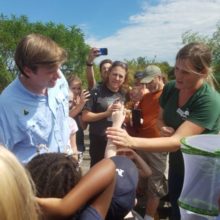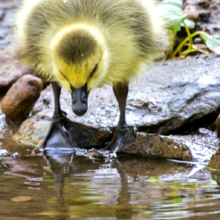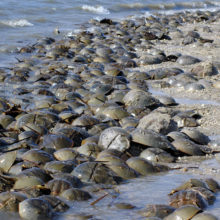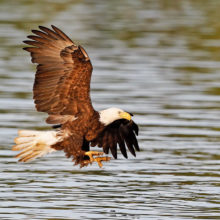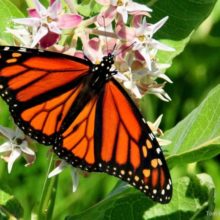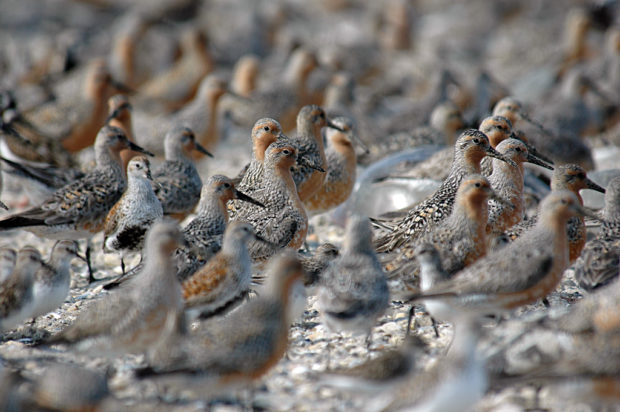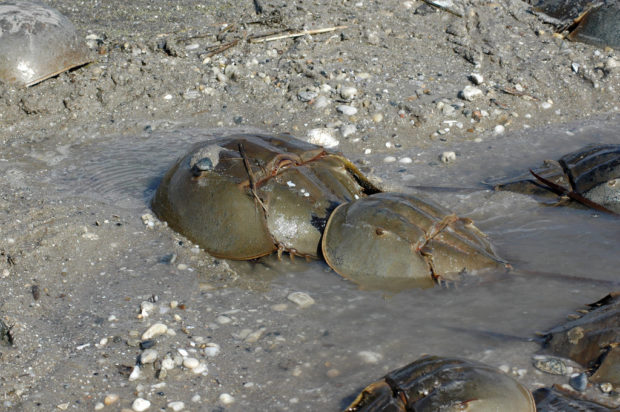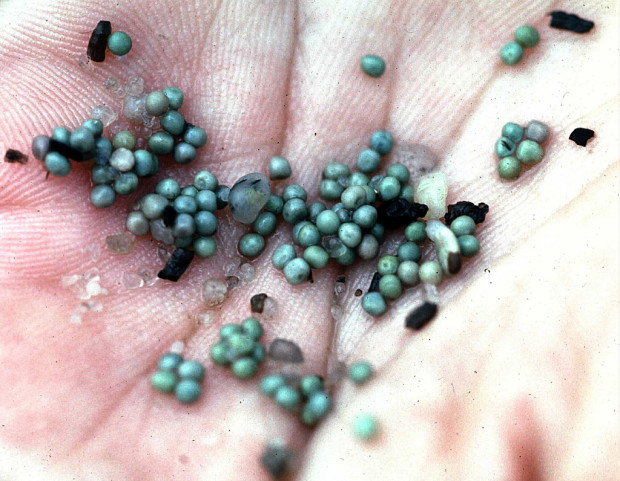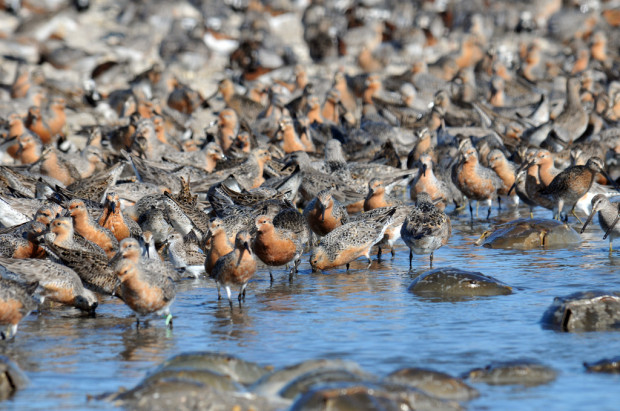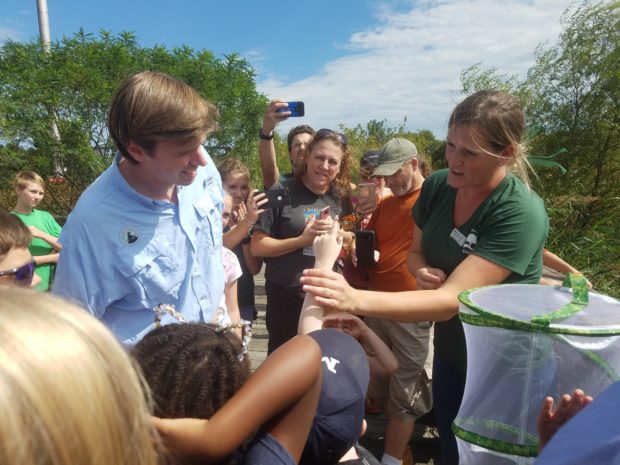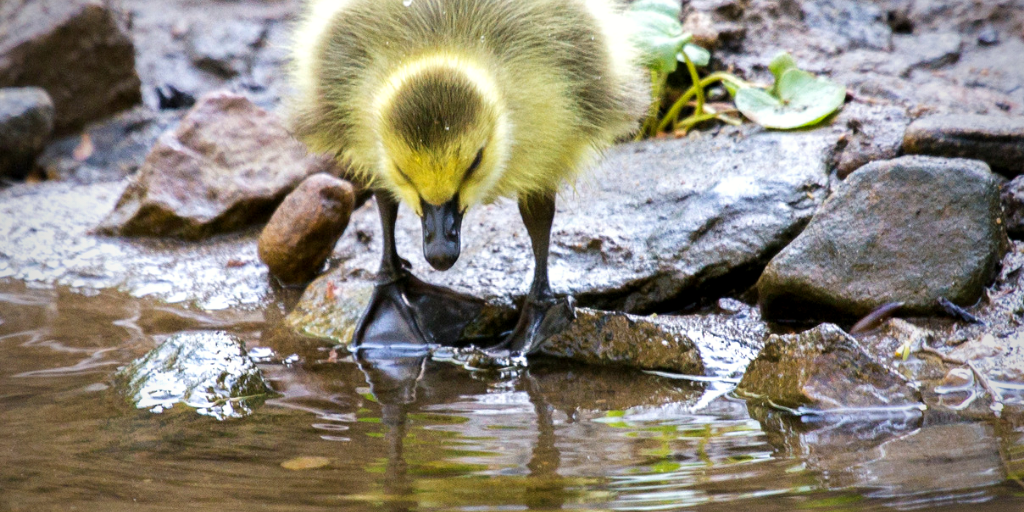Saving the Beach to Save the Red Knot
For some, New Jersey is paved, industrial, and polluted, but for the red knot, New Jersey is life or death. Each year the red knot makes an awe-inspiring migration of 9,000 miles from the Arctic to the southern tip of Tierra del Fuego in South America and back again. Without New Jersey’s bayshores, the red knot would not survive; without our help, the red knot may not have a place to stop much longer.
I recently walked the grounds of the Cape May National Wildlife Refuge on the southern tip of New Jersey. Over the next few months thousands of horseshoe crabs will converge on the refuge’s five-mile stretch and other stretches along the Delaware Bay. Under the cover of night, the living fossils that resemble a rusted iron helmet with a dagger tail, will team at the break before scuttling from the waves in search of the high-tide line.
The females emerge from the surf to dig nests, some with males two-thirds their size already attached in their mating ritual. They lay pearl-sized green eggs – more than 60,000 each over three nights – before returning to the safety of the water. The males fertilize as many eggs as possible before they too return to the surf, and let the waves wash sand over the nest.
It’s those eggs that are key for the red knot and other shorebirds. As the robin-sized red knot migrates, it visits its last stopover in New Jersey just in time to feast on fatty horseshoe crab eggs. By the time the birds depart, they will have doubled their body weight.
The spectacle of hundreds of thousands of shorebirds descending on the beach to devour millions of eggs is truly a marvel. But this national treasure is under threat, as the number of red knots decline precipitously. Since the 1980s, the red knot’s population has fallen by about 75 percent. Eroding beaches from climate change and coastal development, and the impacts of years of horseshoe crab overharvesting have pushed the bird to near extinction.
NWF and its affiliate New Jersey Audubon are making a difference for the red knot in New Jersey. Also, along with affiliates in Pennsylvania and Delaware, NWF and the New Jersey Audubon are helping species across the Delaware River Watershed. From wetlands and living shorelines to restored dunes and oyster reefs, natural infrastructure projects are strengthening communities and defending the red knot’s habitat. Through the Coalition for the Delaware River Watershed, we’re working to make sure those efforts scale up to create a watershed that works together for clean water and healthy habitat.
But when Superstorm Sandy slammed into the Cape May and the bayshores it put an exclamation point on the threat to the red knot. An aerial survey conducted two months after the storm revealed that Hurricane Sandy destroyed 70 percent of the state’s prime horseshoe crab habitat. The population declines were bad enough that late last year the U.S. Fish and Wildlife Service officially listed the rufa subspecies of the red knot as “threatened” under the Endangered Species Act. “Rufa” is the subspecies of red knot in America.
“The red knot migration is among the great wildlife marvels on the world. This listing will allow us to build upon our great successes in the Delaware Bayshore and help replicate our work in Delaware and New Jersey to improve critical red knot habitat in other parts of the country.”
– Collin O’Mara, President and Chief Executive Officer of the National Wildlife Federation.
Protecting and Restoring the Red Knot’s Home
This year the coming of the red knot will herald another important event: the reintroduction of the Delaware River Basin Conservation Act (DRBCA). The DRBCA, reintroduced on Tuesday in the Congressman John Carney of Delaware in the House of Representatives and Senator Tom Carper of Delaware in the Senate creates a $5 million grant program that will help protect and restore the Delaware River Watershed and create a comprehensive planning framework that would increase cooperation among groups in the basin. All of that adds up to a better chance for the red knot.
Please join us in thanking Congressman Carney and Senator Carper for stepping up to help keep the red knot’s home safe.
Thanks @JohnCarneyDE and @SenatorCarper for stepping up for wildlife! #AllAboutThatBasin https://t.co/iYCmyPjlKj pic.twitter.com/HIlgkGI0Ay
— Wildlife Action (@wildlifeaction) April 17, 2015
Source: 4 the Delaware
